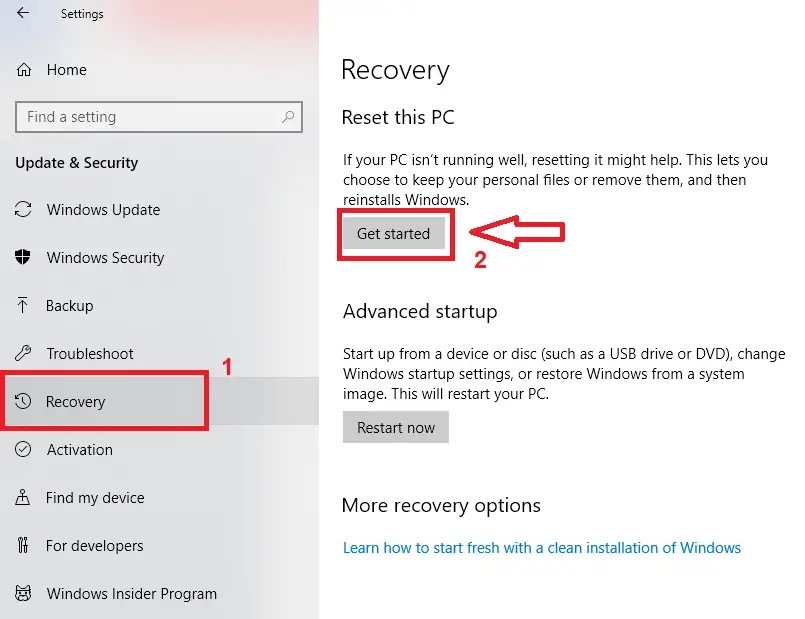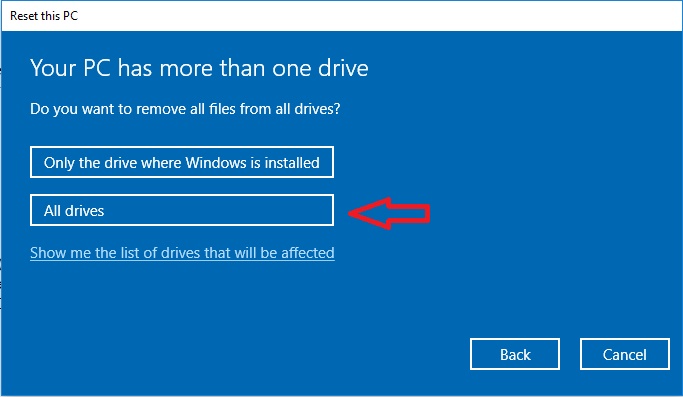How to Factory Reset Windows 10 (Reset This PC Guide)
Computers are a lot like houses. Over time, they collect dust, clutter, and things you don’t really need anymore. At some point, no matter how much cleaning you do, it just feels better to start fresh.
That’s exactly what the “Reset this PC” feature in Windows 10 is designed for. It lets you factory reset your computer—wiping away junk, fixing problems, and giving you that fresh-out-of-the-box feeling again.
Whether you need to reset Windows 10 because it’s running slow, remove malware, or prepare your device for selling, this guide will show you step by step how to reset your computer to factory settings—even if you don’t remember your password.
What Does Reset This PC Do in Windows 10?
When you choose the “Reset this PC” option in Windows 10, the system basically reinstalls itself. You’ll be given two reset choices:
- Keep my files – Windows gets reinstalled, but your personal documents, photos, and music stay untouched. However, apps and custom settings will be removed. This is useful if you just want a quick Windows reset without losing your data.
- Remove everything – This is a full factory reset of your computer. It wipes out all apps, settings, and personal files, restoring your PC to its default state. When most people talk about doing a reset to factory settings, this is the option they mean.
When you reset Windows 10, you’ll also be asked how you want to reinstall the operating system. There are two main options:
- Cloud download – This downloads a fresh copy of Windows 10 directly from Microsoft’s servers. It requires an internet connection and roughly 4GB of data. This is the best choice if your system files are corrupted or if you’ve been dealing with malware.
- Local reinstall – This uses recovery files already stored on your PC. It’s faster and doesn’t need internet, making it a good option for a quick factory reset of your PC.
Pro Tip: If your system files are damaged or you’ve had malware, go with Cloud download. If you just want a quick reset, Local reinstall is usually fine.
When Should You Use Reset This PC?
Resetting a computer isn’t something you do casually. But there are certain times when it’s the smartest (and fastest) solution:
- Performance issues – Your PC has become unbearably slow or freezes often.
- Virus or malware infection – A reset wipes out malicious software.
- Digital clutter – You’ve got years of unused apps, settings, and random files.
- System instability – Frequent crashes, blue screen errors, or corrupted files.
- Selling or donating your PC – A full wipe ensures no one can access your personal data.
If any of these sound familiar, using the Reset this PC feature may be the best way to get a clean slate and restore your computer to peak performance.
Before You Reset: Must-Do Checklist
Resetting your PC is a big step, so don’t just dive in. Here’s what you need to do first:
- Back up your files – Save your important documents, photos, and videos to an external drive or a cloud service like OneDrive or Google Drive.
- Check software licenses – Programs like Microsoft Office, Adobe, or paid apps may need reactivation after the reset. Make sure you have the keys or login details handy.
- Unplug extras – Remove USB drives, printers, and other peripherals.
- Keep your laptop plugged in – Resetting can take an hour or more, and you don’t want your battery dying mid-process.
- (Optional)Create system restore point – If you want a safety net, set up a system restore point so you can roll back if something doesn’t go as planned
Step-by-Step: How to Reset This PC in Windows 10
Alright, let’s get into the actual process. Here’s the step-by-step guide to factory reset your computer:
Step 1: Open Recovery Settings
- Press Windows key + I to open the Settings app.
- Click Update & Security.
- Select Recovery from the sidebar.
- Under “Reset this PC,” click the Get started button.

Step 2: Choose Your Reset Option
Windows will now ask how you want to reset:
- Keep my files – Reinstalls Windows but keeps your personal files (documents, photos, etc.). Apps and settings will be removed.
- Remove everything – Wipes everything and does a full factory reset PC.

If you’re selling your laptop or want a total fresh start, go with Remove everything.
Step 3: Choose Reinstall Method
- Cloud download – Downloads a fresh copy (about 4GB, so make sure you have internet).
- Local reinstall – Reinstalls Windows using files already on your device (faster, no internet needed).

Step 4: Confirm and Reset
Windows will give you a summary of what’s about to happen. Review it carefully, then hit Reset.
Your PC will restart and the reset process will begin. This can take anywhere from 30 minutes to 2 hours, depending on your system speed.
Once it’s done—you’ll have a fresh installation of Windows 10.
How to Factory Reset Windows 10 Without Password
What if you’ve forgotten your administrator password? Good news—you can still reset Windows 10.
Step 1: Open Settings (If Accessible)
- Log in with another account.
- Open Settings > Update & Security > Recovery.
- Click Get started under Reset this PC.
- Choose Remove everything to fully wipe your computer.
Step 2: Use Reset Options
You’ll see two reset choices:
- Keep my files – Removes apps and settings but keeps your personal files.
- Remove everything – Wipes everything: apps, settings, and files
Step 3: Choose Drive Reset
Windows will ask whether to reset just your system drive (C:) or all drives.
- Only the drive where Windows is installed – Resets only C: drive.
- All drives – Wipes every partition (C:, D:, E:, etc.).

You can click Show me the list of drives that will be affected to double-check before proceeding.
Step 4: Confirm and Reset
- Review the warning message.
- Click Reset to continue.
- Windows will restart and begin resetting.
Depending on your system and drive size, this may take 30 minutes to a few hours.
Once complete, Windows 10 reinstalls itself and prompts you to set up a new account—no old password required. It’s like starting with a brand-new computer.
Factory Reset Laptop vs Desktop: Any Differences?
The process is the same, but:
- On laptops, keeping the charger plugged in is absolutely essential.
- Some manufacturers (like Dell, HP, or Lenovo) include their own recovery partitions. If available, you may see an option to reset to the manufacturer’s factory settings instead of Windows default.
What If Reset This PC Doesn’t Work?
Sometimes things don’t go smoothly. If you run into issues like the reset failing or getting stuck, try these fixes:
- Use Advanced Startup
- Hold Shift while clicking Restart.
- Go to Troubleshoot > Reset this PC.
- Create a Bootable USB
- Use Microsoft’s Windows 10 Media Creation Tool.
- Boot from USB and choose Install Windows.
- Check Your Hardware
- If reset keeps failing, your hard drive or memory might be the problem. Run a hardware diagnostic test (most PCs have one in the BIOS menu).
Reset This PC vs Fresh Start vs System Restore
Windows 10 gives you multiple ways to fix problems. Here’s how they differ:
- Reset this PC – Full reinstall. Option to keep or remove files.
- Fresh Start – Found under Windows Security > Device performance & health. Reinstalls Windows with the latest version, keeping personal files but removing most apps (even manufacturer bloatware).
- System Restore – Rolls your PC back to an earlier point in time (only works if you’ve set up restore points).
If your PC just recently started acting up, try System Restore first. If issues persist, use Reset this PC or Fresh Start.
Will resetting remove Windows activation?
No, your Windows license is tied to your hardware. It will remain activated.
Can I undo a factory reset?
Not once it’s complete. That’s why backups are essential.
Does factory reset delete drivers?
Yes, it resets them to defaults. But Windows usually reinstalls the latest drivers automatically.
Is factory reset safe?
Yes, but if you choose Remove everything, all your personal data will be wiped. Back up first.
The Reset this PC feature is one of the most powerful (and underrated) tools in Windows 10. Whether you’re dealing with a sluggish system, fighting malware, or prepping your laptop for a new owner, it’s the simplest way to factory reset your computer and get a fresh start.
How to Create Bootable USB from PowerISO